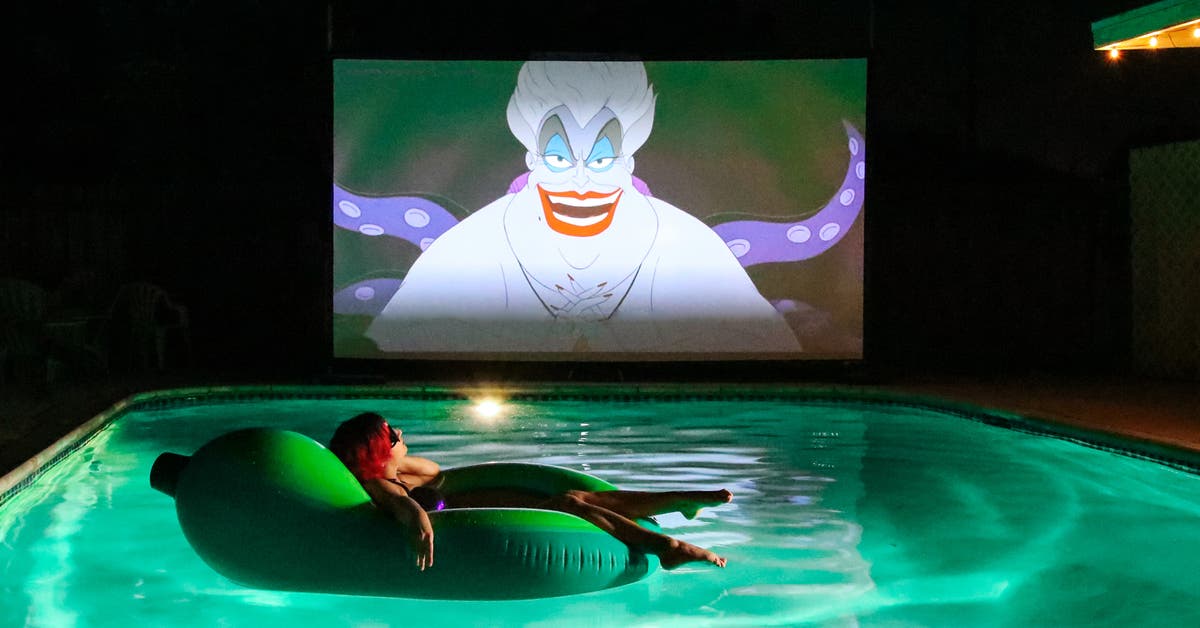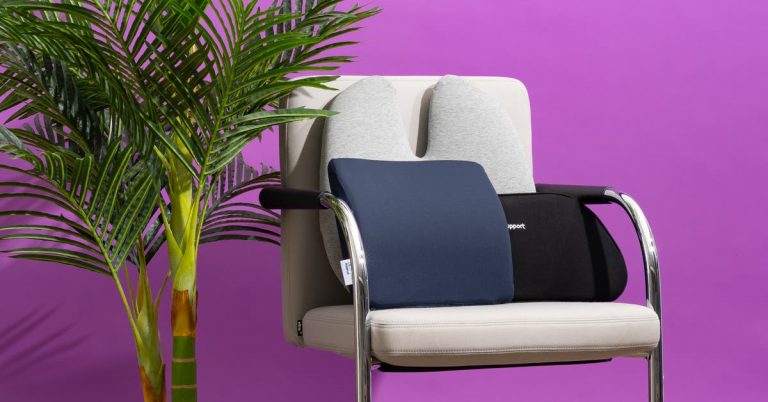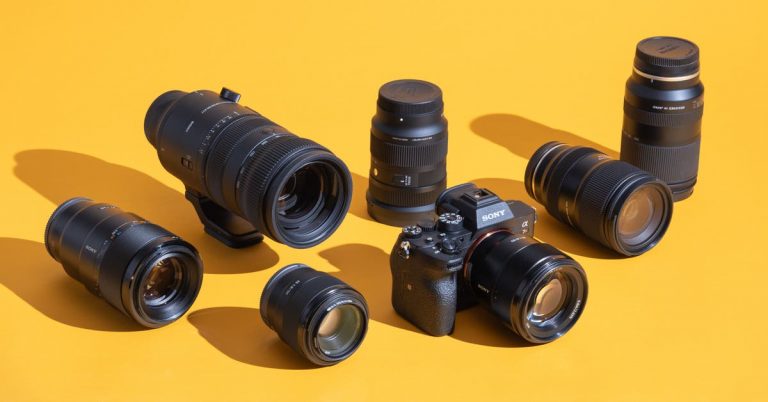The 3 Best Outdoor Projector Screens of 2025
Elite Screens ezCinema 2 Series: This pull-up screen, which is available in multiple sizes, is incredibly easy to set up: You simply open the long, metal casing and pull the screen up by its handle. The scissor mechanism in back holds the screen in place and creates a fairly taut surface, though it’s not as smooth as you’ll get from the Yard Master Series. It uses the same screen material as our favorite affordable, indoor pull-down screen, and our measurements showed it to have good color accuracy — though it did lose some image brightness compared with our picks. But this screen is not designed specifically for outdoor use; it has no weatherproofing and does not come with any ground stakes or ropes to keep it steady. It’s only suited for a patio surface where there’s protection from wind. Even then you’d want to put some sandbags or other weights on the base to prevent tipovers.
Elite Screens Pop-up Cinema Series: We wanted to love this affordable pop-up screen, but sadly it’s a great idea poorly executed. The flexible screen and base unfold and pop into shape immediately, like larger versions of a fold-out car sunshade — you can set up the 84- or 92-inch screen in less than five minutes. But we found the build quality to be surprisingly poor: The Velcro tabs that connected the base and screen failed to line up, the screen material was extremely wrinkled and performed the worst in our brightness test, and folding the pieces back up to put them in the supplied bag was much harder than Elite Screens’s video makes it look.
Xgimi Portable Outdoor Screen: This 70-inch-diagonal screen costs about $100, is very easy to assemble, and has a lightweight design that’s simple to move around the house or yard. Our measurements showed that the fabric screen material has decent color accuracy, but it’s quite thin and allows a fair amount of light to pass through, so it doesn’t preserve image brightness as well as our picks do. This small screen wouldn’t be bad to pair with a portable projector for indoor use, but we don’t love it for outdoor purposes. The package includes ground stakes to improve the screen’s stability in grass or dirt, but there are only seven snaps securing the thin material to the frame, which doesn’t make for a taut surface. Even a light breeze will cause the fabric to flap, and the frame legs are short, so the screen hangs low to the ground.
Vivohome Inflatable Movie Screen: Available in sizes of 14 to 24 feet, this inflatable screen (and, presumably, the many copycats on Amazon) was less stable than our inflatable pick from Gemmy. Setting up the screen itself is fast and easy, but the design of the base and its use of a single fan, which doesn’t distribute air as evenly as dual fans, caused the front of the screen to fall forward a lot in our tests.
Once we got everything secured, it performed pretty well. But we spent so much time experimenting with the screen and rope placement to keep the screen upright that setting up a rigid screen would’ve been faster. Plus, the black base material could bleed onto the white screen material very easily if it got even a little wet.
If you plan to buy a different inflatable screen than our recommendation, look for one that has a fuller, more triangular base with back supports to keep the screen upright — as opposed to the two-feet design of this model.
Tripod “slide show” screens: We did not test any screens with a tripod-style base. Many of these screens have a 4:3 shape, not the wider, 16:9 format used for HDTV and many movies. That by itself isn’t a huge issue, but the small footprint of the tripod on such screens makes them far more wobbly than the wide-stance rigid screens we reviewed. Indoors, wobbliness isn’t a problem, but outside on soft, uneven ground, where you often have wind, your screen could take a nosedive halfway through Mamma Mia.
DIY construction materials: You can find plenty of materials that make a great DIY screen if you’re ambitious enough to tackle the project.
Some readers of our article about setting up a DIY outdoor theater commented on using more industrial materials — specifically, white PVC roofing material or clear plastic wrap. The PVC material should reflect light just as well as, if not better than, the Target sheets we tested, and it is smooth. It also offers the bonus of being weatherproof. The cost should be similar, unless you know some roofers who can give you scraps for free.
Be wary of any materials that are too glossy or mirrorlike, since such a surface can create a noticeable and image-ruining hotspot in the center of the screen. If that’s what you have on hand, however, you could always secure a white sheet to it and enjoy a rigid, highly reflective, and — if you do it right — wrinkle-free screen.
The clear plastic wrap, essentially a jumbo version of what you might use in your kitchen to wrap food, could work as a rear-projection screen. However, we imagine that such a screen would be a significant hassle to construct without any wrinkles. Since our goal with this guide is to find approaches that improve the picture quality, one of the other options listed here is likely to be better.
A 4-by-8 sheet of oriented strand board, painted white, would provide a strong and reflective backing for the Target sheets. It wouldn’t work well on its own, even painted, since you’d likely see the texture of the board. Particleboard with a melamine surface wouldn’t require painting, though you would have to take care to avoid bumping the edges during storage between movie nights.
This article was edited by Grant Clauser.






